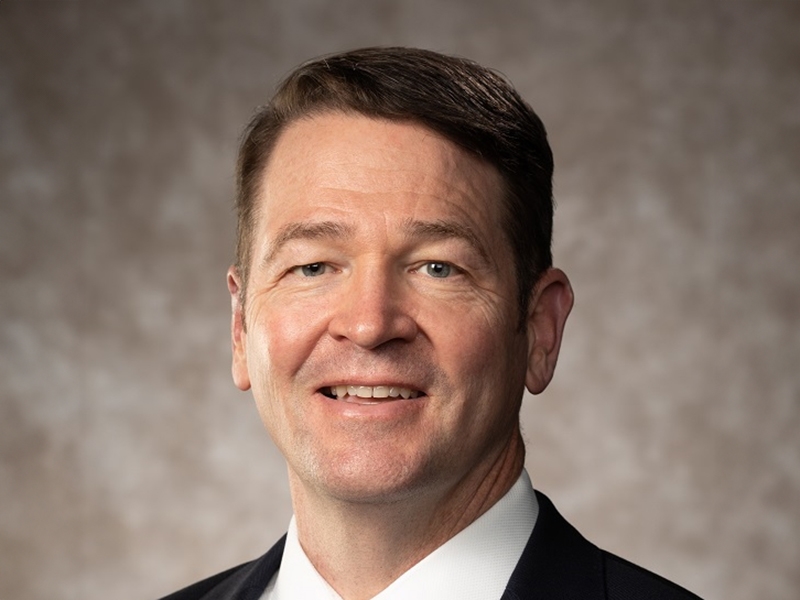Forum for Third Bumpers College Dean Candidate to Be Held Today, Oct. 2
Forum for Third Bumpers College Dean Candidate to Be Held Today ... University of Arkansas Newswire


The Third Dean Candidate for the Dale Bumpers College of Agricultural, Food and Life Sciences
Oct. 02, 2023
The third dean candidate for the Dale Bumpers College of Agricultural, Food and Life Sciences, Jeff Edwards, will hold an open forum for the campus community at 2:30 p.m. today, Monday, Oct. 2, in the John A. White Jr. Engineering Hall, room 209.
During the open forum, Edwards will focus on the theme “Strengths and Opportunities at the Dale Bumpers College of Agricultural, Food and Life Sciences” and include thoughts and commentary on trends in agriculture, food and life sciences education and research.
The campus community can attend in person or virtually via this Zoom link. Virtual attendees will be asked to register and must have a university email address.
A recording will be available within 24 hours following the presentation at this link for those who are unable to attend in person.
U of A faculty and staff can provide their feedback on the third dean candidate by completing an evaluation form. Faculty and staff must sign in with their university credentials to access the form. The deadline to submit feedback is 5 p.m. on Oct. 6.
About Jeff Edwards
Since 2022, Edwards has served as head of the Department of Crop, Soil and Environmental Sciences at the U of A, where he holds the rank of full professor.
Edwards’ areas of research include wheat variety testing, sustainable agricultural production systems, optimal fertilization strategies for small grains and development of robust small grains production systems that are adaptable to changing climatic and environmental conditions.
Before accepting his current role at the U of A, Edwards spent 18 years at Oklahoma State University. He started as an assistant professor and small grains extension specialist in 2004 and attained the rank of full professor in 2012. From 2015 to 2022, he served as head of the Department of Plant and Soil Sciences at OSU.
Edwards holds a bachelor’s degree in agriculture from Western Kentucky University and two advanced degrees from the U of A: an M.S. in agronomy and a Ph.D. in crop, soil and environmental science.
For more information on Edwards, view his curriculum vitae or visit the Bumpers College dean search website.
About the University of Arkansas: As Arkansas’ flagship institution, the U of A provides an internationally competitive education in more than 200 academic programs. Founded in 1871, the U of A contributes more than $2.2 billion to Arkansas’ economy through the teaching of new knowledge and skills, entrepreneurship and job development, discovery through research and creative activity while also providing training for professional disciplines. The Carnegie Foundation classifies the U of A among the few U.S. colleges and universities with the highest level of research activity. U.S. News & World Report ranks the U of A among the top public universities in the nation. See how the U of A works to build a better world at Arkansas Research and Economic Development News.
SDGs, Targets, and Indicators in the Article
1. Which SDGs are addressed or connected to the issues highlighted in the article?
- SDG 4: Quality Education
- SDG 8: Decent Work and Economic Growth
- SDG 9: Industry, Innovation, and Infrastructure
- SDG 12: Responsible Consumption and Production
- SDG 13: Climate Action
2. What specific targets under those SDGs can be identified based on the article’s content?
- Target 4.3: By 2030, ensure equal access for all women and men to affordable and quality technical, vocational, and tertiary education, including university.
- Target 8.2: Achieve higher levels of economic productivity through diversification, technological upgrading, and innovation.
- Target 9.4: By 2030, upgrade infrastructure and retrofit industries to make them sustainable, with increased resource-use efficiency and greater adoption of clean and environmentally sound technologies and industrial processes.
- Target 12.2: By 2030, achieve the sustainable management and efficient use of natural resources.
- Target 13.3: Improve education, awareness-raising, and human and institutional capacity on climate change mitigation, adaptation, impact reduction, and early warning.
3. Are there any indicators mentioned or implied in the article that can be used to measure progress towards the identified targets?
- Indicator 4.3.1: Participation rate of youth and adults in formal and non-formal education and training in the previous 12 months.
- Indicator 8.2.1: Annual growth rate of real GDP per employed person.
- Indicator 9.4.1: CO2 emission per unit of value added.
- Indicator 12.2.1: Material footprint, material footprint per capita, and material footprint per GDP.
- Indicator 13.3.1: Number of countries that have integrated mitigation, adaptation, impact reduction, and early warning into primary, secondary, and tertiary curricula.
Table: SDGs, Targets, and Indicators
| SDGs | Targets | Indicators |
|---|---|---|
| SDG 4: Quality Education | Target 4.3: By 2030, ensure equal access for all women and men to affordable and quality technical, vocational, and tertiary education, including university. | Indicator 4.3.1: Participation rate of youth and adults in formal and non-formal education and training in the previous 12 months. |
| SDG 8: Decent Work and Economic Growth | Target 8.2: Achieve higher levels of economic productivity through diversification, technological upgrading, and innovation. | Indicator 8.2.1: Annual growth rate of real GDP per employed person. |
| SDG 9: Industry, Innovation, and Infrastructure | Target 9.4: By 2030, upgrade infrastructure and retrofit industries to make them sustainable, with increased resource-use efficiency and greater adoption of clean and environmentally sound technologies and industrial processes. | Indicator 9.4.1: CO2 emission per unit of value added. |
| SDG 12: Responsible Consumption and Production | Target 12.2: By 2030, achieve the sustainable management and efficient use of natural resources. | Indicator 12.2.1: Material footprint, material footprint per capita, and material footprint per GDP. |
| SDG 13: Climate Action | Target 13.3: Improve education, awareness-raising, and human and institutional capacity on climate change mitigation, adaptation, impact reduction, and early warning. | Indicator 13.3.1: Number of countries that have integrated mitigation, adaptation, impact reduction, and early warning into primary, secondary, and tertiary curricula. |
Behold! This splendid article springs forth from the wellspring of knowledge, shaped by a wondrous proprietary AI technology that delved into a vast ocean of data, illuminating the path towards the Sustainable Development Goals. Remember that all rights are reserved by SDG Investors LLC, empowering us to champion progress together.
Source: news.uark.edu

Join us, as fellow seekers of change, on a transformative journey at https://sdgtalks.ai/welcome, where you can become a member and actively contribute to shaping a brighter future.








